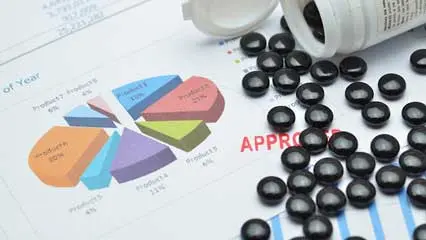Global Dermocosmetics Market is projected to be worth 183 billion by 2034 and is anticipated to surge at a CAGR of 9.76%.
Biologically active compounds are used in dermocosmetics, which are skincare and hair care products that combine dermatological and cosmetic benefits to treat and manage a variety of skin and scalp disorders. Dermocosmetics, in contrast to conventional cosmetics, are frequently created through scientific research and are usually suggested by doctors for conditions like eczema, acne, hyperpigmentation, aging, and sensitive skin. With their therapeutic benefits, these products are made to promote skin health in addition to attractiveness. By bridging the gap between beauty and medicine, dermocosmetics are widely accessible through pharmacies, clinics, and online platforms, making them a reliable option for both focused treatments and preventive care.
Drivers: The market for dermocosmetics is expanding quickly as a result of rising skin health awareness among consumers and the occurrence of skin disorders such as eczema, acne, hyperpigmentation, and premature aging. Customers are increasingly drawn to dermatologist-recommended and clinically supported goods, particularly as they look for safer and more efficient substitutes for conventional cosmetics. The growth of social media marketing and e-commerce platforms has also improved the accessibility and visibility of products. Furthermore, the use of dermocosmetic products in skincare and hair care applications is becoming more popular due to improvements in dermatological research and the creation of novel, biologically active chemicals.
Challenges: Dermocosmetics is becoming more and more popular, but the market still confronts a number of obstacles. Accessibility may be restricted by high product costs, particularly in areas with low incomes or where consumers are price sensitive. Adoption may also be hampered by emerging markets' low consumer knowledge and comprehension of dermocosmetics. Furthermore, some customers could still favor traditional cosmetics because they are less expensive or because they are unaware of dermocosmetics' therapeutic advantages. Product introductions in some areas may be delayed by regulatory obstacles and the requirement for thorough product testing. Consumer mistrust can also result from uneven product labeling or false claims, which harms a brand's reputation and slows market penetration.
Market Trends: Growing demand for customized skincare products suited to different skin types and conditions is one of the major trends in the dermocosmetics market. In order to provide personalized product recommendations, brands are increasingly utilizing AI and skin testing techniques. Additionally, consumers are embracing eco-friendly formulations and clean beauty, which is driving manufacturers to incorporate sustainable, natural ingredients. Digital platforms provide easy access to specialized and high-end products, but dermatologists and social media influencers still have a significant impact on consumer behavior. Additionally, as customers seek out holistic approaches to skin and hair health, cross-category innovation combining skincare with wellness and nutraceuticals is growing.
Global Dermocosmetics Market Key Players:
Amorepacific, Avon Products, Inc., Beiersdorf Aktiengesellschaft, Himalaya Global Holdings Ltd., Johnson & Johnson, Kanebo Cosmetics Inc., L’Oréal Groupe, Lotus Herbals Pvt. Ltd., Unilever PLC, VLCC Health Care Limited are just a few of the major market players that are thoroughly examined in this market study along with revenue analysis, market segments, and competitive landscape data.
Global Dermocosmetics Market Segmentation:
By Product: Based on the Product, Global Dermocosmetics Market is segmented as; Skin care, Hair care.
By Distribution Channel: Based on the Distribution Channel, Global Dermocosmetics Market is segmented as; Supermarket and hypermarket, Pharmacies and drug stores, Online e-commerce channels, Other distribution channels.
By End Use: Based on the End Use, Global Dermocosmetics Market is segmented as; Hospitals, Specialty clinics, Medical spas, Other end use.
By Region: This research also includes data for North America, Latin America, Asia-Pacific, Europe, Middle East & Africa.
This study also encompasses various drivers and restraining factors of this market for the forecast period. Various growth opportunities are also discussed in the report.





































